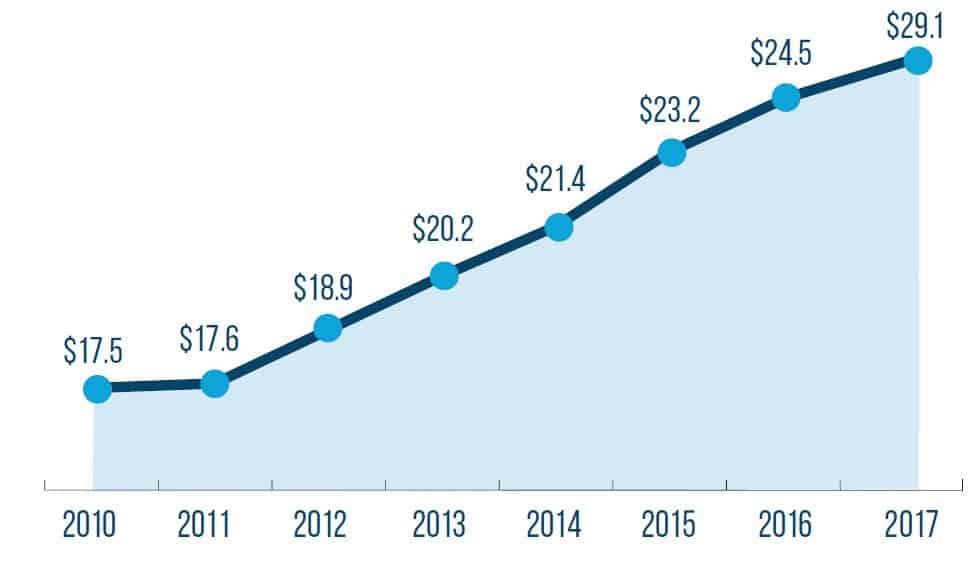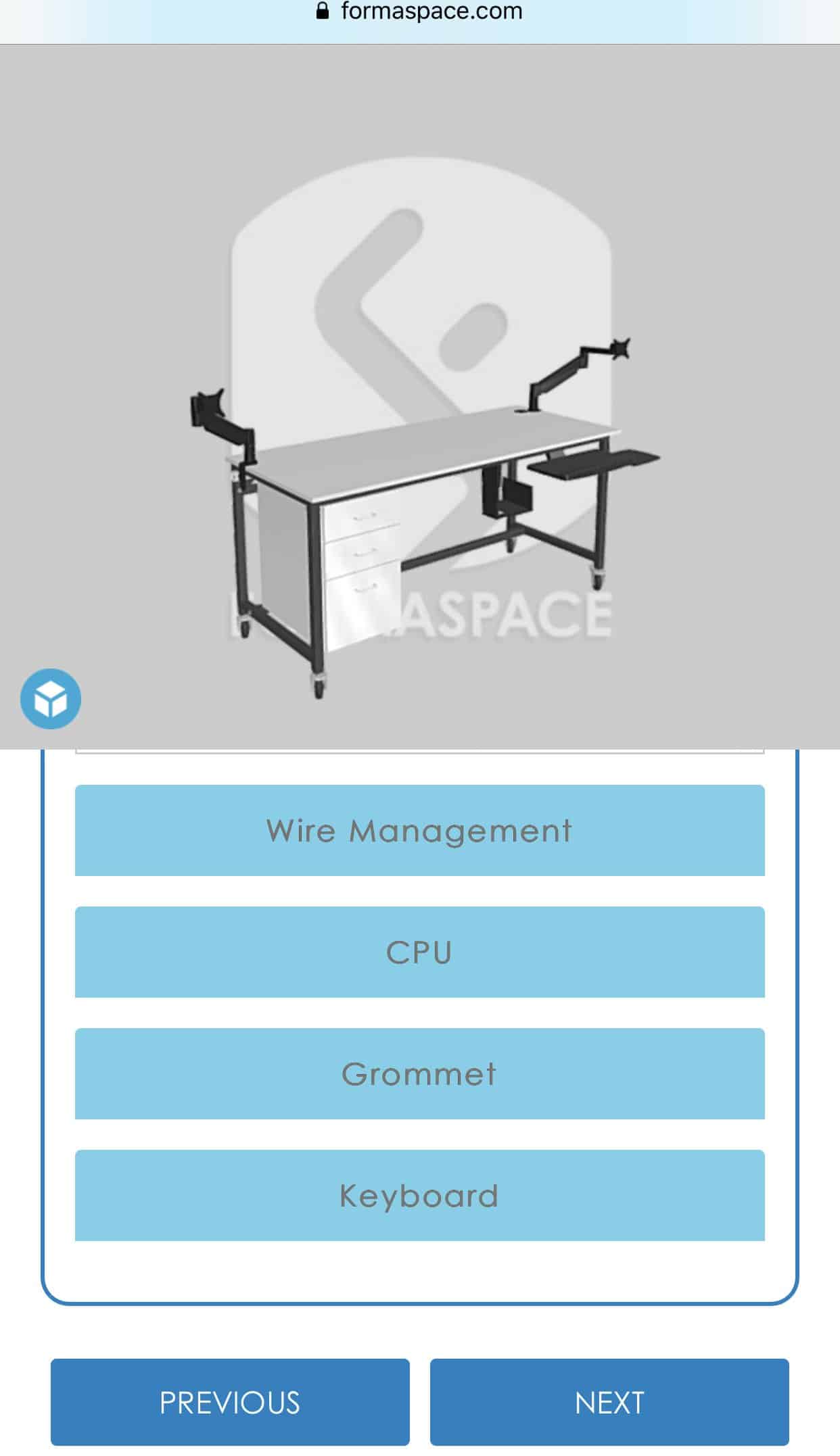In light of the monumental changes taking place in the gaming industry, it’s time for businesses to take a second look at how game technology can help boost their bottom line. We take a look at the latest developments in this fast-changing industry.

Demographic Tsunami: the Rise Generation Gamer
“If you want to catch fish, fish where the fish are.”
As it turns out, 2.6 billion is a lot of fish.
According to stats published by the Entertainment Software Association (ESA), 2.6 billion was the number of video game players (gamers) worldwide in 2018. ESA consumer research also claims that 60% of Americans play video games on a daily basis, with an average of 2 players per household. The demographic scales are tipped slightly toward men (10% more men than women play games); the average male gamer is also younger (at 32 years) than female gamers (average age of 36 years).

Growth in consumer spending since 2011 has risen steadily. The NDP Group estimates consumers spent $26 billion on video games in 2017.

Colleges and universities were among the first to identify the ramifications of this “generation gamer” demographic tsunami. As we’ve written about recently, mid-tier schools are worried about the long-term risk to their traditional collegiate varsity sports programs (football, basketball, baseball, etc.), which have proven to be one of their best tools for ginning up alumni engagement (and thus lucrative endowment donations).
As a result, many schools are adding fully-fledged, competitive video game programs, collectively known as e-sports, complete with varsity league tournaments, plus scouting/recruiting programs (including full-ride scholarships!) to attract the most promising players.
Are We Experiencing a Classic Market Inflection Point in the Gaming Industry?
It’s a dog eat dog world.
Successive business cycles in the video game industry have led to winners and losers.

Remember how prevalent stores selling (or renting) game programs used to be?
Seattle-based Valve took notice of this and created their highly successful Steam online gaming platform (is it fair to call it the Netflix of computer games?). At its peak, Steam controlled as much as 70% of the market for downloaded PC games, spelling the end for many bricks-and-mortar game shops selling or renting individual titles.
Realizing that they are losing too much revenue to Valve’s Steam storefront (which reportedly takes a 30% cut of game publisher’s revenues), competitors such as Epic Games, flush with the success of their breakout hit Fortnight, hope to shift game developers onto their own platforms by offering publishers reduced game hosting fees (Epic charges 12%).
The Fortnight game has also led the industry in revenue growth through what’s known in the industry as “in-game purchases,” a lucrative up-sell of personal virtual “gear” and other extras that many gamers crave. In contrast, Activision/Blizzard, with revenues of $7.5 billion, has not been able to replicate the success Fortnight’s “in-game” revenue stream; as a result, they recently announced they were laying off 10% of their staff.
Other PC game manufacturers are feeling the heat as well, with major manufacturers, from EA to ArenaNet, laying off workers and closing studios. The market seems to be shifting away from the PC platform as new gamers, especially the so-called casual gamers, take up mobile devices as their new game platform of choice. Analysts also point to increasing antagonism from game players, who feel they are being coerced into paying more for game add-ons, which detracts from what is meant to be a fun, “free” experience. Adding additional pressure, government regulators have begun to investigate whether games which offer “loot box” prizes are actually practicing an illegal form of gambling.
The Big Players in the Tech Industry Make their Move into the Gaming Space
Despite these concerns over platform wars and revenue shortfalls, traditional games makers may soon be feeling the pinch from an even larger, more existential threat: Industry giants, such as Google and Apple and even Snap (makers of Snapchat), are sensing an opportunity to vanquish the victors.
Take Google for example. Earlier in March, Google threw down their gauntlet at the Game Developers Conference (GDC), announcing a major initiative, their new Stadia on-demand streaming service for video games, which sent shockwaves through the gaming industry.
Meanwhile, Snap pre-announced its intention to launch its own new gaming platform, codenamed “Project Cognac,” at a Los Angeles developer conference on April 4.
And yesterday, during a special keynote, Apple announced its plans to create its own game streaming service, called Apple Arcade, which it plans to launch this fall. This marks a strategic shift for Apple into the content subscription model world – popularized by the likes of Netflix and Hulu – a move many analysts suspect is a reaction to plateauing hardware sales caused by market saturation.
Indeed, these Silicon Valley giants are on the lookout for revenue growth, which becomes an increasingly difficult challenge given how large these companies are to begin with — Google’s gross revenues topped $136 billion in 2018, and Apple, despite a slowdown in iPhone sales, earned a cool $265.59 billion. It may not solve all their problems, but the $26 billion games market looks ripe for picking.
Expect more announcements at the industry’s biggest confab later this year at the E3 conference (hosted by ESA), which takes place June 11-13, 2019 in Los Angeles.
Sophisticated Gamer Toolkits Fuel Independent Game Development
The entry of major Silicon Valley players into the game streaming services market may be bad news for existing game publishers, whose revenue streams will likely be impacted when the “800-pound gorillas” start throwing their weight around.
On the other hand, it might be good news for independent game developers who are savvy enough to take advantage of the new Apple and Google platforms. Indeed, this might be a re-run of the smartphone app “gold rush” that kicked off earlier in the decade at the start of the smartphone era.
Independent game developers — known as “indies” — have had their ups and downs over the years, as indie developer Jake Birkett explains in his GDC talk titled “How to Survive in Gamedev for Eleven Years Without a Hit”
Indeed, given the sophistication and low cost of today’s game development tools, we might be in a “golden age” of independent game development. Here are some of the key resources for “indie” developers:
Game Development Platforms:
The two leading indie game development platforms, Unreal Engine (from Epic Games, makers of Fortnight) and their arch-rival Unity, both offer free or low-cost developer kits, with most of the royalty costs pushed to the ‘back end’, e.g. charged if and when a game made with their tools becomes a commercial success. Both companies are also testing new variations of their game engines targeted at businesses seeking to create hyper-realistic, real-time product visualizations (competing with SketchFab, which powers our own 3DConfigure software); these will likely bear more expensive licensing fees once they move beyond the current beta versions.
3D Modeling and Texturing Tools:
Most of the popular commercially-available 3D software tools provide a direct workflow into games engines, including Autodesk’s Maya and 3DS Max, Modo from the Foundry, and Newtek’s Lightwave 3D. Blender, an increasingly popular open source 3D content-creation program, is a free to use alternative. Creating realistic textures to apply to polygon-based surfaces is another important task in the game development pipeline; software giant Adobe recently acquired the independent French company Allegorithmic, known for its popular Substance texturing tool.
Programming Languages:
Proprietary APIs and SDKs in game development are generally on the wane in favor of using established programming languages. For example, Unreal Engine can be extended via C++, while Unity is transitioning from its own scripting tools to C# and JavaScript. Python, the fast-growing open source language, can be used to program functions in Blender, Maya, and Modo; 3DS Max offers a bridge from its SDK into Python.
Resources for Indie Game Developers:
There are a vast number of resources available online for aspiring indie game developers, including countless free tutorial channels on YouTube and Vimeo. You might consider joining a trade association as well. Besides the ESA, there are the International Game Developers Association (IGDA) and the Academy of Interactive Arts & Sciences (AIAS), which recently held its annual DiceSummit. Gamasutra and Polygon are two of the many website resources recommended for aspiring game developers.
How Can Your Business Leverage Game Technology?
Now let’s turn to how companies are adopting game-based technology to further their business objectives, starting with the advanced product visualization.
Use Game-Based Technology to Design and Market Products
Advanced product visualization based on high-performance game technology not only gives engineers and designers a way to evaluate products during the design stage, it’s a very effective tool for both B2B and B2C consumers as well. Design visualization allows end users to see what different options look like when making a purchasing decision — this is especially important if the product involves a number of different configuration options, or it’s necessary to select from different material options or surface finish treatments.
Formaspace is a pioneer of game-based product visualization technology in the furniture industry. We introduced our free 3DConfigure tool in early 2018, making it the first such system available to furniture buyers and consumers. It’s free to use and requires no additional software download — simply visit the web page using your PC browser, tablet, or smartphone.
Savvy marketers are also taking advantage of opportunities to market their company with free games, hoping for a true “viral moment.” Some of the game concepts are small enough to fit within a Google Ad, which makes them much more attractive and engaging than standard display ads. Other companies are choosing to create standalone mobile games that support a cause or offer a sweepstake prize, or some other reward that encourages participation and engagement with their target audience while collecting valuable marketing data.
Use Video Games in the Job Recruiting Process
Does it make sense to recruit new hires with a video game? The answer for these leading companies is YES.
Take the renowned consulting company McKinsey, known for its highly selective, rigorous candidate screening process. With more than 750,000 job seekers competing for fewer than 1,000 openings a year, McKinsey is looking at new ways to attract and identify the best candidates quickly, before they go calling at other big tech companies, such as Google or Facebook. Recently, about 2,000 McKinsey job candidates in the London office were asked to play a computer game, which starts with a picture of an island: “You are the caretaker of an island where plants and animals live in a variety of diverse ecosystems.”
Let the games begin.
McKinsey is not the only one using games in the hiring process. Tesla, LinkedIn, and Accenture are reportedly using AI-based games developed by Pymetrics to screen candidates, with the hope this will bypass the standard “canned answers” that many candidates provide during normal job interviews and provide a truer insight into the applicant’s aptitude, capabilities, and character.
Similar game-based technology may one day move into the college application process. Bloomberg reports that LA-based Imbellus (makers of the McKinsey job applicant game) are also exploring ways to supplement or even replace the standard SAT and ACT exams with video game-based testing algorithms.
Using Video Game Technology for Training and Teambuilding at Work
Game-based Virtual Reality (VR) systems are starting to address some of the unique business challenges arising from employees performing “remote work” either from their home offices or distant branch offices around the world.
Solutions in this category include shared “mixed reality” media displays that allow workers in the office to work “side by side” with remote workers.
Game-like VR training systems are another emerging solution for remote workers, allowing them to participate in education programs without the added time and expense of travel to the home office.
Teambuilding is another promising area for business-oriented game technology. Many employers already turn a blind eye to “after hours” video game play between employees as a way of building camaraderie. Savvy employers looking for ways to engage their younger employees are taking advantage of this organic trend by encouraging and promoting video game tournaments.
Choose the Furniture Solutions that Take IT/Game Development Seriously
Whether you are a game developer or a business user taking advantage of games technology, your long-term health and wellness are paramount.
Unfortunately, the health of game developers and game players can suffer as a result of sitting in one position for too long at a time.
That’s why Formaspace builds a full line of tables, workbenches, and desks with built-in Sit-to-Stand capability. These let you move your entire workspace up and down — at the touch of a button — allowing you to transition from a seated to standing position and back throughout the day. This can help you increase healthy circulation and reduce your chance of strain due to prolonged sitting.
To learn more about the health benefits of Formaspace Sit-to-Stand furniture, read our report on how to improve employee health and wellness on the job.
The high-performance furniture solutions from Formaspace are an ideal ergonomic solution for your entire game development team or IT departments. We build our furniture to last too: all our products are built in the USA at our factory headquarters in Austin, Texas using top quality American-made steel and other materials. For example, we offer exceptionally durable worksurfaces, built for every need, from stainless steel or ESD shock resistant countertops (for handling sensitive electronic hardware), to heavy-duty solid core hardwoods, such as maple or walnut. Formaspace products are built to last, we guarantee them unconditionally for twelve full years, even if you use them 24 x7 (as many of our industrial customers do).
If You Can Imagine It, We Can Build It.
If you don’t run with the crowd, Formaspace can also create one-of-a-kind custom furniture designs that are built to your exact specification.
Talk to your Formaspace Design Consultant today about all our furniture options. They’ll be able to tell you why SpaceX, Oculus, Apple, Google, Twitter, Capital One, and Parabola Architects choose us for their high profile furniture projects.












